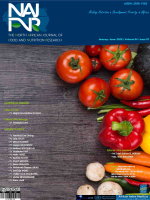Main Article Content
Proteome consistency of the aleurone layer in grain of major wheat species grown over different years
Abstract
Background: Aleurone layer (AL), being a living cell layer among the peripheral layers of the grain structure obtained after milling wheat, is rich in, vitamins, minerals, and antioxidants potentially nutritional value of the flour. Objectives: To isolate AL in the mature grain of the three major species; Common wheat(CW), Durum wheat (DW),and Einkornwheat (EW) that weregrown at two different years as well as to analyze and compare their proteomes revealed through two-dimensional electrophoresis (2DE) and image analysis. Methods:The AL was hand dissected and unicellular purity verified using scanning electron microscopy. AL proteins were separated using IEF pH3-10 X SDS-PAGE then Coomassie-stained. The gels were scanned and the images were compared using the same spot (Nonlinear Dynamics) and were proteins identified using mass spectrometry and database interrogation. Results: For CW and DW samples, no significant quantitative or qualitative differences were observed between the AL proteome in the two years. However, a few quantitative differences were revealed between EW for AL of 2006 and 2007. The identified proteins were classified in the carbohydrate pathway and stress defense response. Conclusion: This remarkable stability over environmental growing conditions strengthens the need to pay greater attention to this unicellular living cell of the wheat grain.







